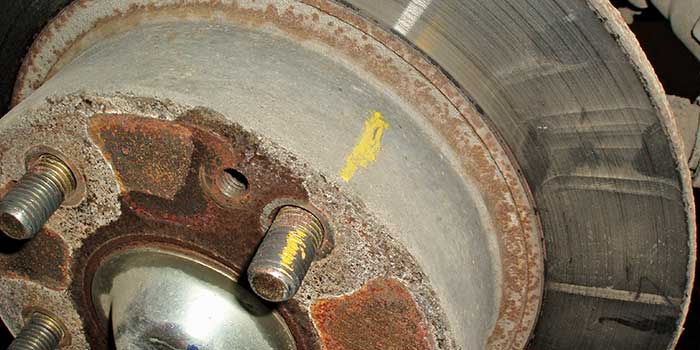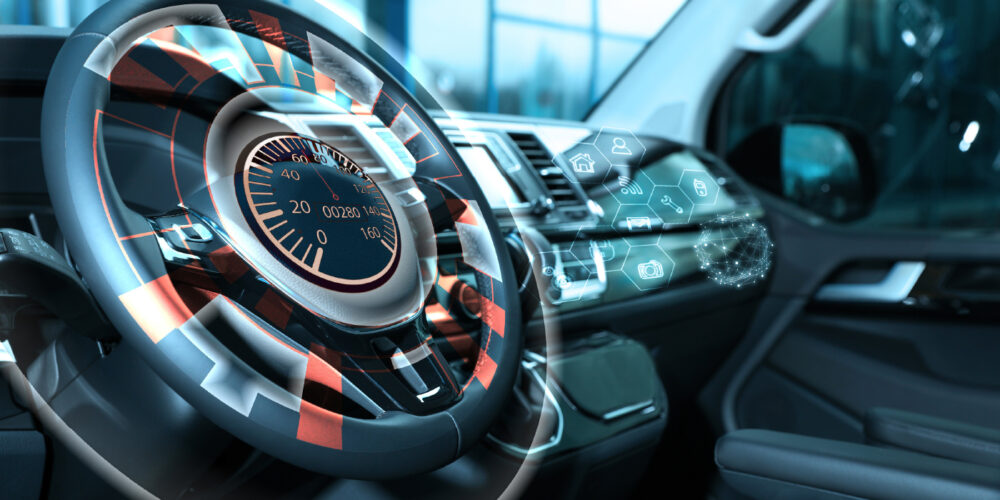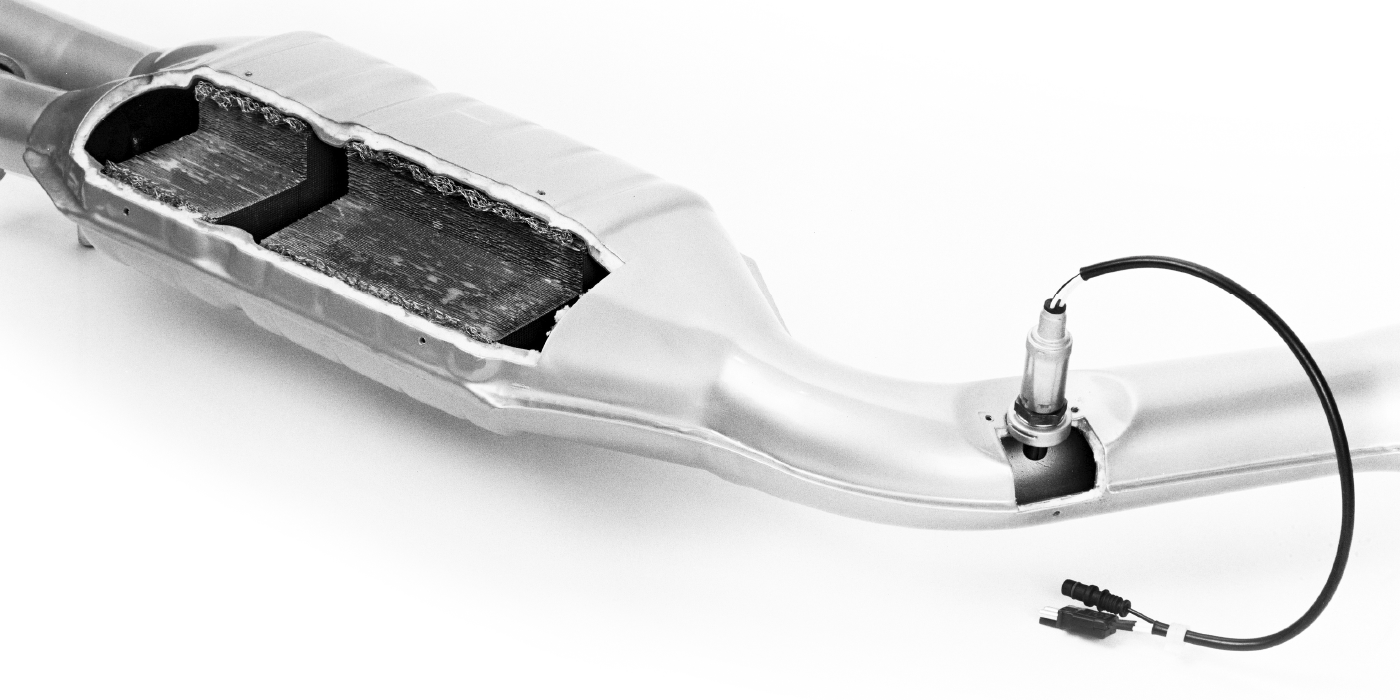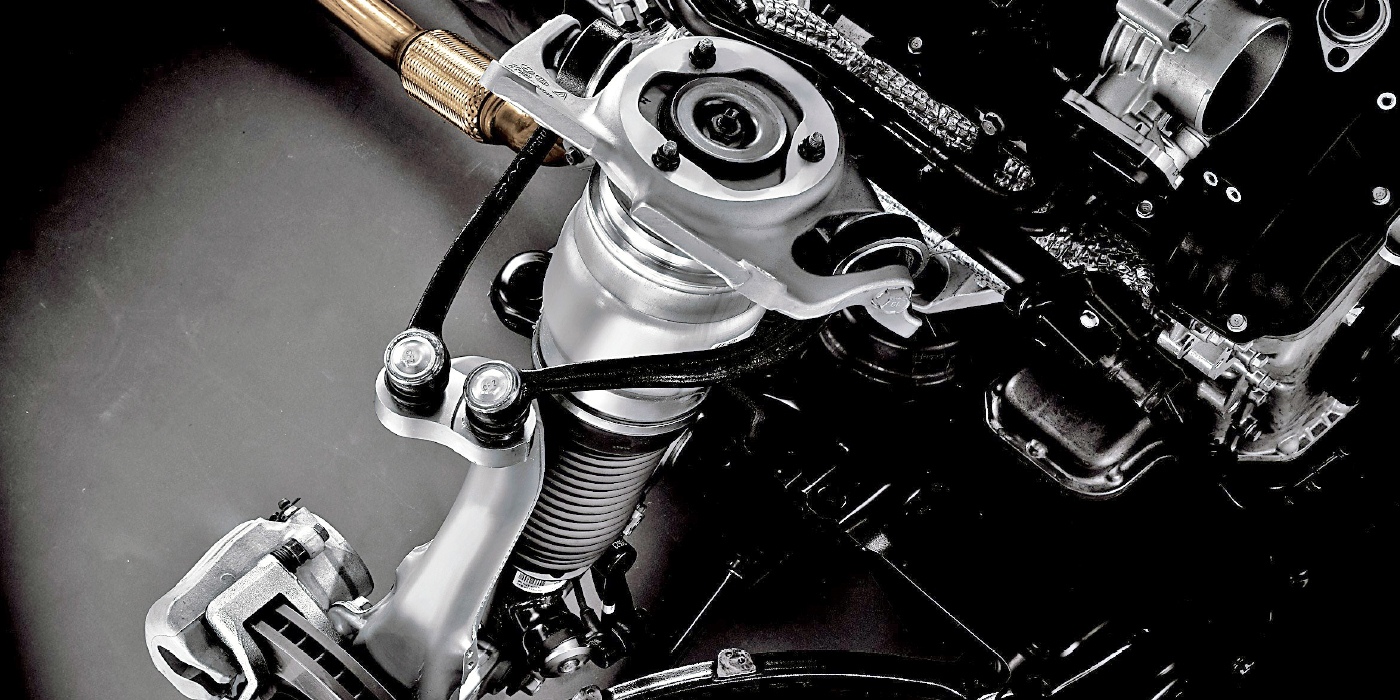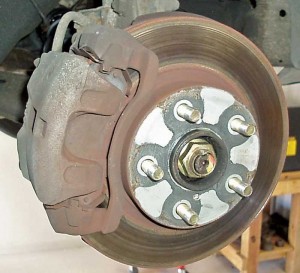
When we advertise a “$XX.95” brake service, we’re often stepping over the proverbial dollar to pick up the proverbial dime. Since brake repairs should be a major profit center for any shop, it pays, in the most literal sense, to occasionally review the mathematics of selling brake services.
In this feature, I’ll explore how brake services can be packaged to increase profit, reduce comebacks and reduce labor costs. To simplify the concept, pricing will be in rounded numbers. The base labor time will be one flat-rate hour, which is the average aftermarket labor guide repair time for replacing brake pads on an older model Mazda Tribute/Ford Escape compact sport-utility vehicle (SUV) platform. See Photo 1.
BRAKE PAD MATH
The most basic brake service is the “pad slap,” which consists of installing new disc brake pads on the old caliper and rotor. Doing the math, the wholesale cost of the economy brake pad is $30 and the OE-specified ceramic pad is $90. At a 40% profit margin, the retail prices of the pads are $50 and $150, respectively. The gross profit of each is one labor hour plus $20 for the economy pads and one labor hour plus $50 for the ceramic pads.
Although the ceramic pads add $100 to the customer’s repair bill, I think it’s fair to say that installing the cheaper economy brake pads creates the highest risk of a noise, pulsation, brake dusting or brake sensitivity complaint, especially if ceramic-type pads were original equipment. And, if the vehicle is equipped with expensive custom wheels, we can expect that brake dusting will generate a series of complaints on such repairs. The customer might also complain if installing the economy pads results in a less responsive brake pedal with less braking power. And, if the economy pad is replaced free of charge with ceramic to rectify a customer complaint, the value of the initial labor charge is reduced by half.
While the more expensive pads might cost your customer an extra $100, the savings to your shop might be worth many times as much in reduced warranty complaints. Is there a time and place for an “economy” pad replacement? In some cases, yes, but not as a routine service-writing practice.
BRAKE CALIPER MATH
Whatever the choice of brake pads, the caliper must be removed to replace the pad, which is included in the initial 1.0 hour labor charge. The main contributor to brake caliper failure is a damaged or deteriorated protective piston boot. When that happens, water penetrates the assembly and rusts the caliper bore to the piston. The symptoms of a sticking caliper piston are generally pulling brakes and uneven brake pad wear. See Photo 2.
So let’s add a caliper replacement to our brake math just to see how it works. Wholesale cost per pair is $100, and with a 40% profit margin, they retail at about $167 per pair, allowing a $67 gross profit on the caliper sale. Adding two new brake hoses at a wholesale cost of $36 per pair, and a retail of $60 per pair, adds $24 profit, with only a small additional labor time added for removing the chassis end of the hose and flushing the old brake fluid from the calipers.
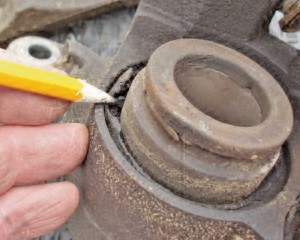
BRAKE ROTOR MATH
Worn disc brake rotors are a major contributor of brake quality complaints and, while a rotor’s parallelism and thickness variation measurements might fall within manufacturer’s specifications when the brake pads are installed, remember that rotor wear accelerates as the miles add up. See Photo 3.
The decision to replace or resurface often depends upon how the brake rotor is attached to the wheel bearing hub. Conventional “hat” or “float” rotors, for example, can easily be removed for resurfacing or replacement. According to our aftermarket labor guide, 0.8 hours is required for resurfacing two rotors off the vehicle.
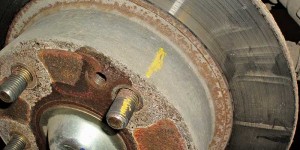
On the other hand, two new rotors cost a shop $56, which retail at $93. So, replacing with new yields a $37 profit with a far lessened probability of a comeback, while resurfacing yields a 0.8 labor hour profit with a larger probability of a warranty comeback primarily due to errors in lathe setup. For this reason, more shops find themselves replacing rather than resurfacing hat-type brake rotors.
In contrast, servicing “captured” rotors that require removal of the wheel bearing hub for replacement will greatly increase labor times. Assuming that the rotor has sufficient machinable stock, many shops might choose on-car resurfacing over replacement.
On the other hand, if on-car resurfacing isn’t available or the remaining machinable stock is marginal, replacing with a new rotor might provide a better long-term solution. See Photo 4.
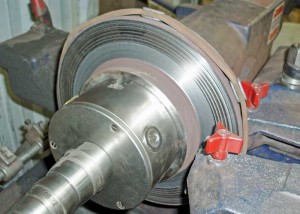
RECAPPING THE MATH
If we install the OE-type ceramic pads, new calipers, new brake hoses and new rotors, the retail price of the parts increases from $50 for a “pad-slap” to $420 for the complete brake service package. At either extreme, gross parts profit increases from $20 to $262, or by a multiplier of 13 to 1. But, I also want to point out that the basic labor charge in either extreme will be about 1.0 hours, plus the cost of brake bleeding or flushing if the calipers and/or brake hoses are replaced.
To keep the math simple, I’ve ignored brake flushing or truing a new rotor to the wheel bearing hub. While those are highly recommended services, they aren’t required for each brake service. So, on a quantitative basis, how many 1.0-hour + $20 “economy” brake replacements do we want to lose in order to gain a single 1.0-hour + $260 brake replacement? At a relative profit ratio of 13:1, we could theoretically break even by losing a dozen “pad slaps” in order to gain one complete brake replacement.
How many of either extreme will result in a warranty comeback? Let’s estimate a comeback rate of a dozen economy repairs to one complete repair. That might not accurately represent your market, but you get the idea.
Of course, we often write service for all of those brake replacement and repair combinations in between. On one vehicle, maybe it’s pads and rotors, while the next might be pads and calipers. I’m not advocating selling unneeded parts, but it’s not hard to see that the “pad slap” is a money loser when the full cost of comebacks, labor and shop overhead is factored into the final price.
As always, a shop must tailor its pricing and labor strategies to its local market conditions. So consider the above pad, caliper and rotor repair scenarios more as a mathematical model than a specific service recommendation. It’s always important to remember that, while the work is done in the service bay, the profit is made at the service desk by selling the most profitable and reliable brake service packages.

